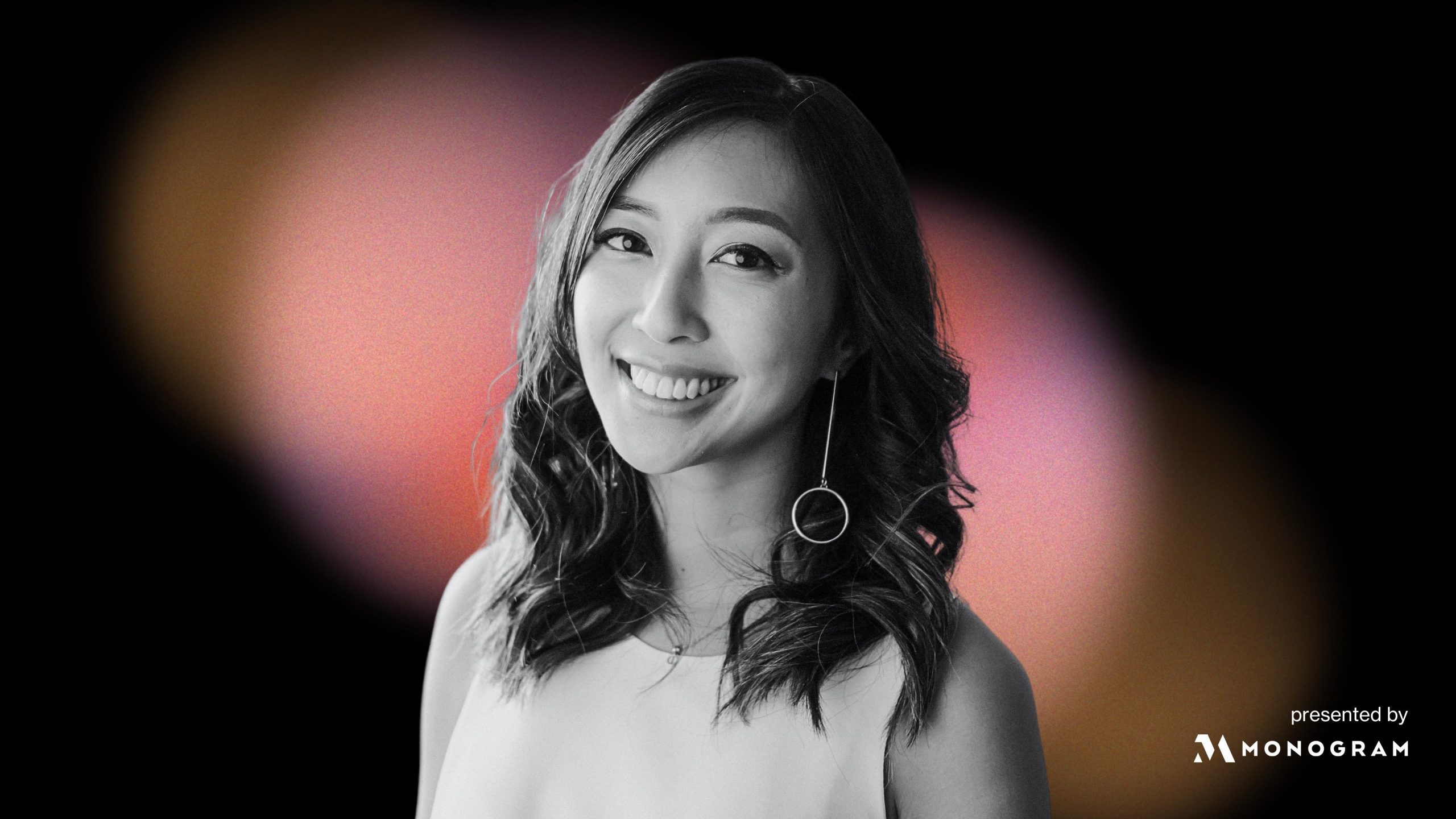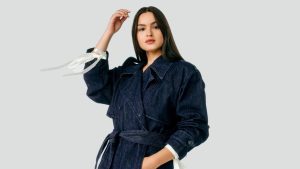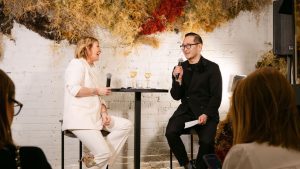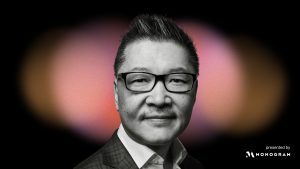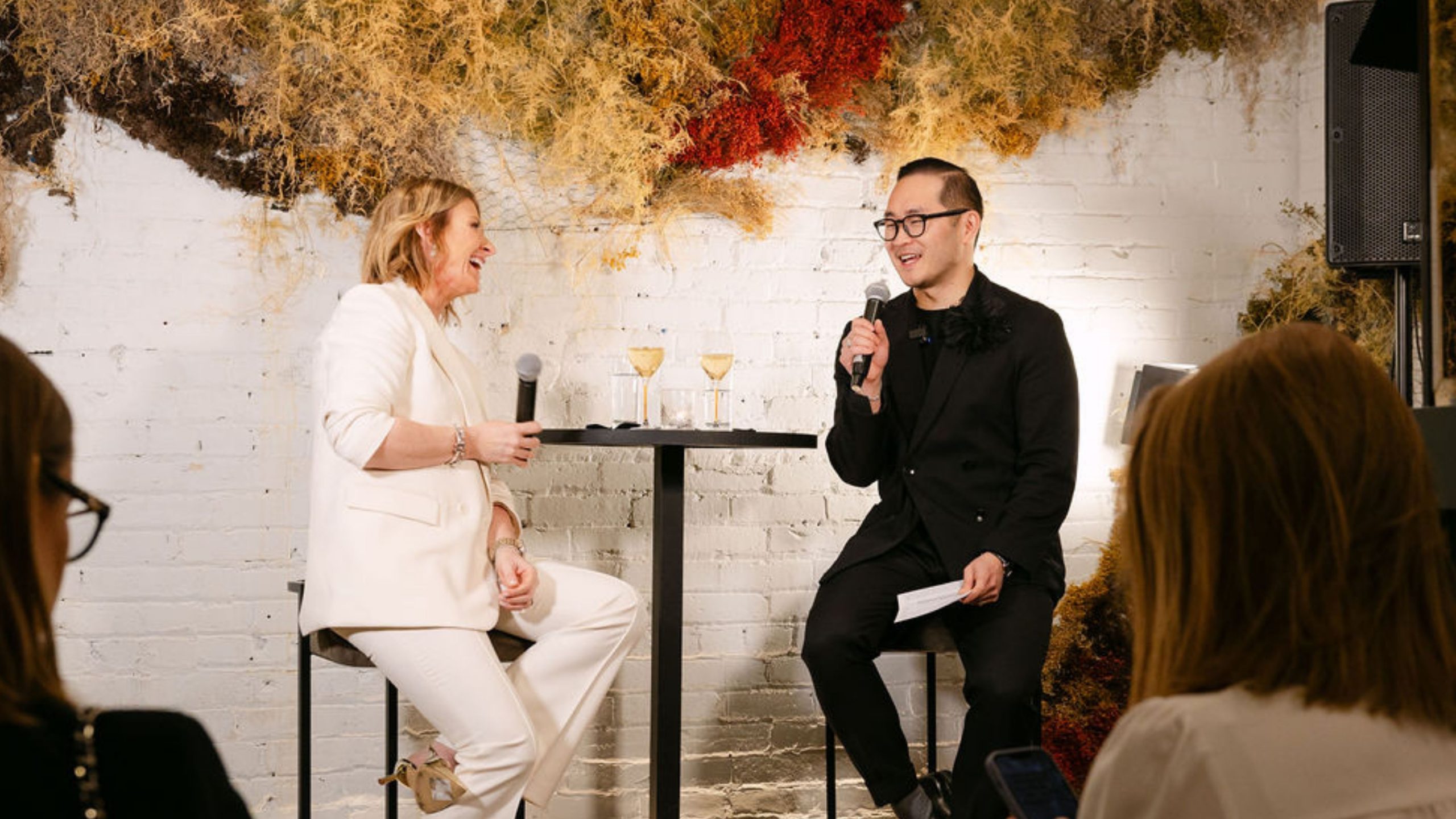Connie Lo’s path to founding Three Ships is rooted in the cultural, personal, and entrepreneurial crossroads of her identity as a Chinese-Canadian woman. For Lo, beauty was never just about aesthetics—it was about self-discovery, well-being, and finding harmony between two worlds that often pulled her in opposite directions.
Lo’s own journey with skincare began out of necessity. Like many young girls, she struggled with acne during her preteen years. “I tried everything, but it only made things worse. My skin became red and inflamed,” she explains. It wasn’t until her mother, who embraced holistic wellness, guided her toward natural ingredients that Lo found relief. This experience planted the seed for what would later become Three Ships, a skincare brand built on transparency, efficacy, and affordability.
While Three Ships wasn’t Lo’s first brush with business, it became the ultimate manifestation of her values and vision for the beauty industry. Alongside co-founder Laura Burget, she set out in 2017 to disrupt the status quo. “When we started, the clean beauty space was dominated by brands that either had a granola, DIY vibe or were prohibitively expensive. We wanted to make effective, natural products accessible to everyone.” Lo’s desire to debunk myths about natural ingredients and create transparency in a largely unregulated industry became a key driver in the brand’s success.
This profile is part of a larger series called Momentum, presented by Monogram Appliances, which aims to celebrate Asian leaders. Listen to the conversation or continue reading below.
Growing up, were you a beauty buff? What was your first experience with beauty?
Connie Lo: My first wellness memory was with my grandma. She made this soup, and I remember her giving it to me. I was really skinny as a kid, and she said, “Connie, if you drink this, it’ll help you gain weight.” Then two seconds later, she turned to my sister and said, “If you drink this, it’ll help you lose weight.” I realized that beauty can be super confusing and very subjective. That was my earliest memory of dabbling in wellness and beauty.
Later on, when I was in grade five, around 10 years old, I got into beauty because I started developing preteen acne. I don’t know if you went through that, but it really impacted my confidence. I’d spend hours at Shoppers Drug Mart looking for something to target breakouts. I’d check all the ingredients, try everything, but I think I used too many products at once and completely disrupted my skin barrier. My skin became red and inflamed. Out of desperation, I turned to my mom, who’s really into holistic wellness and natural skincare. She said, “Connie, if you’ve tried everything synthetic, what do you have to lose by trying something natural?”
So we went to our local farmer’s market and Whole Foods that weekend, and she introduced me to ingredients that were good for my skin. I started making face masks after school with things like oats for sensitive skin, green tea, banana, and egg whites for lifting. (Though, at 10 years old, I definitely didn’t need egg white for lifting!) After a few weeks of using my homemade skincare, along with cutting out processed foods and thinking about internal wellness, my skin cleared up dramatically.
When you were trying out all these products, do you remember what the dominant beauty narrative was at the time? What did it mean to be “beautiful”
Connie Lo: Clear skin was such a big part of it. I remember those Proactiv commercials and St. Ives Apricot Scrub. I tried them all. Back then, beauty standards were heavily influenced by what we saw in magazines. People growing up now have it so much harder with social media. I’m so grateful I didn’t grow up in the Instagram age. Instagram became popular when I was going to university, but when you’re younger and impressionable, it can really affect your confidence.
Interestingly enough, I found an old journal entry from that time. I’ve been keeping a diary since I was five years old, and I had drawn a picture of myself. On one side was what I thought I looked like—with acne, skinnier, and not confident—and on the other side was what I wanted to look like—clear skin, shiny hair, flat stomach, all the things I read about in magazines. It’s sad but reflective of how much beauty standards impacted me.
When you look back on that journal entry now, how does it make you feel, especially as the founder of a beauty and wellness brand?
Connie Lo: I think I’d want to give 10-year-old Connie a big hug and tell her she’ll be okay. Those beauty standards were so unrealistic. Another thing is that back then, almost every brand used Photoshop. The people in magazines didn’t even look like that, but when you’re young, you don’t realize it. Another aspect for me was straddling two worlds: being Canadian and being Taiwanese/Chinese. In North America, the beauty standard was to be tanned because it gave you a lean look. But in Asia, the standard was to be lighter, so there were all these lightening products. I remember buying papaya soap from Thailand and having it imported. I didn’t even know what duties were, but I paid them! My parents were probably annoyed, but I wanted lighter skin. My grandma would say, “Walk with an umbrella when you’re outside,” while my friends at school wanted to be darker. It was a very confusing time for my identity, and beauty played a big role in that.
That is so reflective of the immigrant experience—straddling two identities and not feeling like you belong in either.
Connie Lo: Exactly. It’s a constant balancing act.
When do you think you reached a point where you could accept yourself as beautiful and redefine what that meant for you?
Connie Lo: It’s been a journey. I recently turned 31, and I think only around 30 did I start fully accepting myself. It took a lot longer than I thought. Living away from home when I studied at Queen’s University, going on exchange in Europe, and exploring different cultures really helped. Without my parents’ voices in my head—no matter how loving they are—it gave me space to form my own identity.
There was always a laundry list of things they’d say: “You’re dressed too Canadian,” or “Your skin’s too dark.” But being away allowed me to figure out who I was. I think when you develop your identity and become more comfortable in your own skin, you start to feel beautiful. In your twenties, you’re still figuring that out.
What inspired you to start Three Ships, and how did your past experiences in marketing help build your business?
Connie Lo: I believe every job and experience you have lends itself to where you are now. One of my first part-time jobs was at Club Monaco as a stylist. Well, “stylist” is a generous term—it was a sales associate role—but I learned how to sell and listen to customers, which is a big part of my job now at Three Ships.
When you created the brand with your co-founder Laura [Burget], what was the general discussion around clean beauty at the time? It’s changed so much over the years, and as you mentioned, there’s still no defined regulation or governing body for what constitutes a clean or sustainable beauty brand.
Connie Lo: When we started in 2017, there were only a few key players in the natural beauty space. Tata Harper, for example, was really popular, but her products were expensive, largely due to the farm-to-table or earth-to-skin narrative. Back then, natural beauty was often associated with a granola, DIY vibe—like, “I made this in my kitchen, and that’s the brand.” But Laura and I had a bigger vision. We knew we wanted to grow beyond my kitchen.
Many people thought natural products had to be expensive because of the extraction process from the earth. But we later debunked that idea. There was also a misconception that natural ingredients didn’t work as well as synthetic ones. Another thing about clean beauty at the time was that it was all about what products didn’t have—no parabens, no sulfates, no SLS. Some brands had lists like the “dirty dozen,” avoiding 12 harmful ingredients, while we avoid close to 2,000.
For us, transparency was key from the beginning. We provided a full list of both the ingredients we avoided and those that were in our products. We wanted people to know everything they were putting on their skin, which helped build trust.
RELATED: Madelyn Chung is Amplifying Asian Voices Through the RepresentASIAN Project
Regarding affordability, yes, natural can absolutely be affordable. The markups in the beauty industry are shocking. When we looked into the actual ingredient costs of some products, we realized how cheap they were to make, yet brands charged premium prices. Nowadays, there are more sophisticated ways of extracting natural ingredients, making the process less expensive. For example, we use upcycled ingredients—like 800,000 blueberries from the juicing industry for one kilogram of our vitamin A alternative active—and it’s the same cost as using fresh blueberries.
That’s fascinating.
Connie Lo: The natural industry is complex, and that’s why we want to create a proper definition for natural beauty. We’re even advocating for a governing body to regulate what brands are claiming on their packaging. Right now, consumers have to rely on different retailers—Sephora’s clean and planet-positive stamp, Whole Foods guidelines, or the Detox Market’s standards. It’s too confusing.
It’s overwhelming, even for educated, curious consumers. Different certifications and regulations mean different things, and people are left confused.
Connie Lo: Exactly, and some brands use sneaky marketing tactics. For example, they’ll claim they don’t test on animals, but they might outsource the testing to a third party. That’s why we rely on certifications like Leaping Bunny or certified vegan labels. There’s also a lot of fearmongering in the beauty industry, where some natural brands say, “If you use chemicals, you’ll get cancer,” which we avoid. We believe chemicals have their place, and if you want to use something that isn’t natural, go for it. Our focus is ensuring that if you do choose natural, you can trust that it’s genuinely natural.
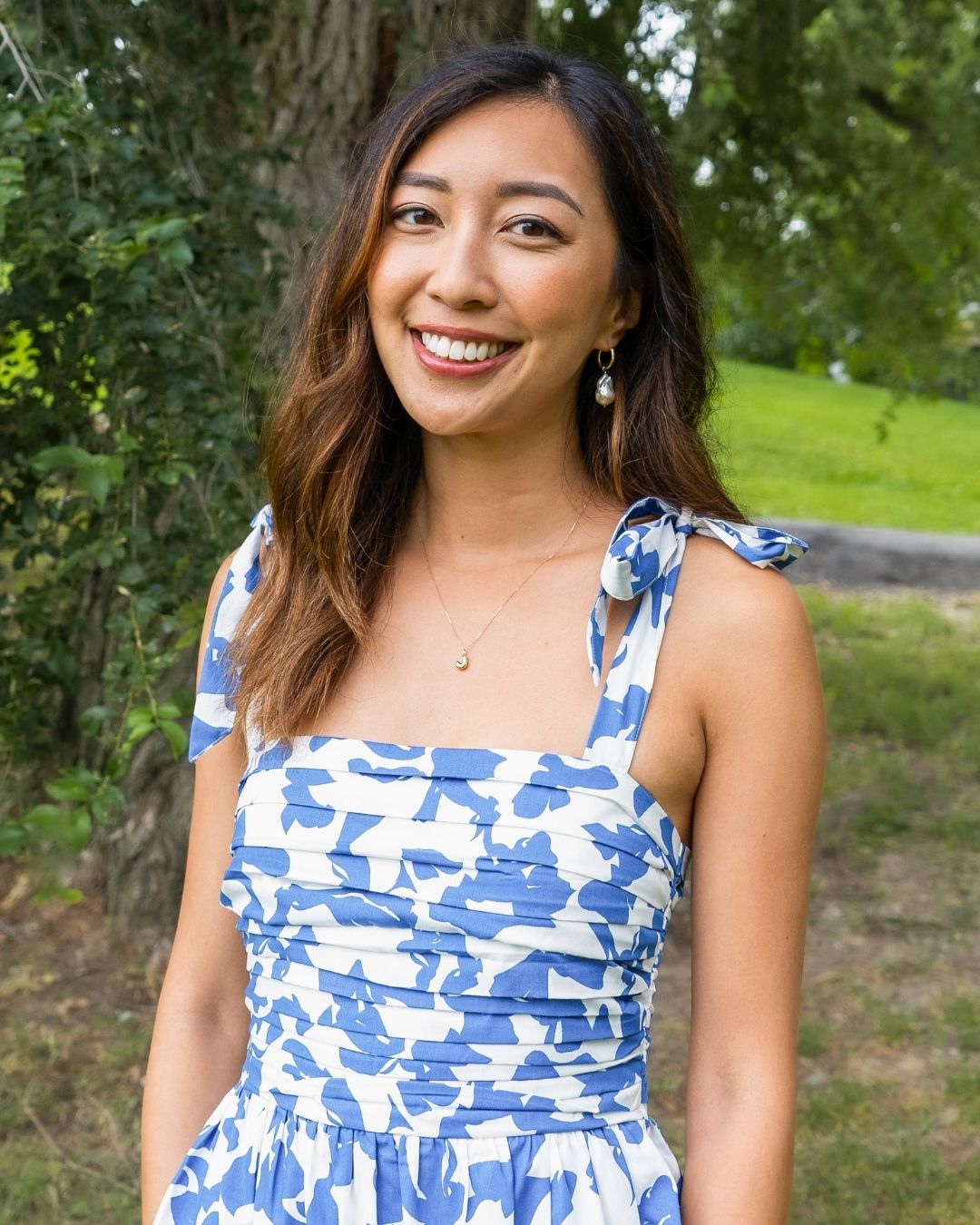



The conversation is often binary, but not all chemicals are harmful, and not all natural ingredients are good for you either. There are good synthetic chemicals and bad natural ones, right?
Connie Lo: Some natural ingredients aren’t safe for pregnancy or breastfeeding, like certain essential oils. Unfortunately, some brands don’t do their research, and consumers have bad experiences with natural products, leading them to avoid natural beauty altogether. That’s a missed opportunity.
How has your identity as an Asian woman influenced your approach to building a modern beauty brand like Three Ships?
Connie Lo: Growing up, beauty in my household was more than just skin-deep. My mom never commented on my looks as a kid, and we recently talked about it. She focused on beauty as something internal—kindness, the way you treat others, and your confidence. That’s beauty. Asian beauty has also traditionally focused on skincare, whereas Western beauty used to be more about makeup. The idea was if you take care of yourself—eat well, use good skincare—you won’t need to cover yourself with makeup. This “less is more” mentality has influenced Three Ships. We don’t make makeup, and we emphasize natural beauty—no retouching, just quality ingredients.
Even our product development is influenced by the ingredients I grew up with. Our Dewdrop Serum, for example, contains tremella mushroom, which my mom used to put in soups and stews when I was a kid. I didn’t realize how much my upbringing influenced Three Ships until I got older. And my co-founder, Laura, is also part Chinese, so she shares some of that heritage too.
Three Ships doesn’t specialize in makeup, but there’s an important conversation happening within beauty around inclusivity, especially shadism and colorism. How have those discussions shaped your perspective on being an inclusive brand?
Connie Lo: It’s a tricky topic and part of why we haven’t ventured into colour cosmetics yet. On one hand, brands today have the technology to cater to all skin tones, and everyone—whether Black, Asian, or white—should find products that work for them. There are great brands like Lady Gaga’s Haus Labs or Orcé, an Asian-founded brand that makes foundations specifically for Asian skin tones.
What consumers don’t often realize are the challenges for small businesses. The minimum order quantities for each shade can be 5,000 units or more, which is a huge financial investment, especially for a new or smaller brand.
Growing up, what kind of media did you consume? Did you mostly engage with Western media and products, or did you also consume Asian media and products?
Connie Lo: I was born in Toronto, so I identify as Canadian. As a kid, I looked at all the magazines, but I didn’t really see anyone who looked like me. In retrospect, I didn’t fit into the beauty standards I was seeing, even though I felt like I did—if that makes sense.
I resonate more with being Canadian, but I’ve heard that many people who are Chinese and born in the US or Canada go through something similar. You grow up resisting your parents’ identity and background. When I was younger, I didn’t want to be Chinese at all. I think it was because many of my classmates were white, and they’d make fun of the food I brought, like the classic Tupperware of homemade food. Now, I’m like, “Wow, my family put in effort to make fried rice,” but back then, all I wanted was Lunchables.
I wanted to push away my Chinese identity. But then in high school, I wanted to learn more about my background, my grandparents, and where I came from. I think it happens as you lose grandparents—you start to think about your origin and lineage. I did a 180 and got into Asian beauty products, followed by Asian pop groups, and watched Chinese and Korean dramas. I remember in grade 11, I went on a trip with my parents to Taiwan, where my mom was born, and also to Hong Kong and Beijing. That’s when I was heavily influenced by Asian beauty—the skin-brightening products, the sheet masks, the neutral eyeshadows and lipsticks. I brought all that back to Toronto, and by university, I started to understand how both worlds could mesh.
To answer your question, I never fully identified with one or the other, but I’ve made peace with that. Nowadays, there are more inclusive brands, and the landscape has come a long way.
What do you think the beauty industry can do to foster a more inclusive space, beyond just marketing and packaging?
Connie Lo: To make consumers feel seen, community groups are great. The best brands have Slack communities, private Instagram groups, or Facebook groups. That’s where founders or CEOs engage regularly, asking consumers questions about what they want—whether it’s shades, product formulations, or packaging. But it’s about actually listening. A lot of brands ask, but they don’t listen.
At Three Ships, we ask our community things like, “If you want a retinol serum, what other benefits do you want it to offer—brightening, firming, or smoothing? What price point? Do you prefer a pump or a dropper for packaging?” We take their feedback seriously. For example, we have a group of 50—soon to be 100—testers who try out pre-production samples. They use the product for two weeks and fill out surveys. We make sure this group is diverse in age, gender, and ethnicity, and if there’s consistent negative feedback, we iterate the formula. That’s a real example of listening and ensuring diversity.
Another aspect is representation. Growing up, I didn’t see many Asian founders. In business school, all the case studies were about old white men. They’ve accomplished a lot, but I wanted to see people who looked like me, or at least women in business. Thankfully, that’s changed since I graduated in 2015. Seeing diverse founders helps you envision a future for yourself, and once you do that, your experiences—like growing up as an Asian Canadian—shape the products you create. That’s how you create real change, beyond marketing.
Much of the past beauty dialogue revolved around aspiration—how to get from point A to point B. How do you think brands can shift away from that and focus more on empowerment—being content and happy with where you are rather than where you “need” to be?
A lot of it comes down to language. Take “anti-aging,” for example. We had a campaign last year called “Anti Anti-Aging” because, when you think about it, the opposite of aging is dying. Would you rather be dead or alive? People don’t realize how loaded that term is.
Aspirational beauty often pushes the idea of looking 20 forever, which isn’t possible when you’re 80. I want to live a long life! At Three Ships, we believe in healthy aging, and we try to enforce that dialogue. My co-founder, Laura, is a great example. She was diagnosed with a brain tumor at 26 and survived a 10-hour operation. Now, five years later, she always reminds people how much of an honor it is to live and get wrinkles. If you have laugh lines, it means you’re having fun!
I was talking to my sister about this recently. All her friends are getting Botox. I don’t have anything against those procedures, but I like seeing my smile lines. They mean I’ve had a fulfilling life. And yes, some lines are from stress, but most are from happiness. We just need to remind ourselves that there’s more to life than looks. You don’t judge your friends or family based on how they look. You value them for who they are, how they empower you, and their values. We need to treat ourselves the same way.
You’ve been running Three Ships since 2017—what’s your best advice for women, especially women of colour, who want to break into the beauty industry or start their own businesses?
Connie Lo: For women, and especially Asian women, I think learning to sell is crucial. Sales has a bad rep, but it shouldn’t. Both Laura and I have sales backgrounds, and it’s been one of the reasons we’ve grown so fast. As a founder, you’re always selling—whether it’s your product, your vision to investors, or your mission to future hires. On hard days, you’re even selling the idea of why you started the company to yourself!
Women tend to shy away from sales, but I believe women are natural salespeople because we know how to listen. Sales is less about talking and more about listening. So, learn to sell.
This interview has been edited and condensed for clarity. For the full conversation, listen to Connie and Lance on the Mission Critical podcast.


